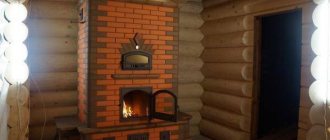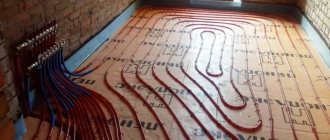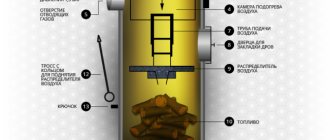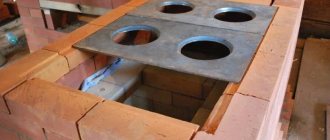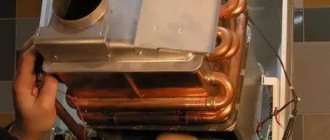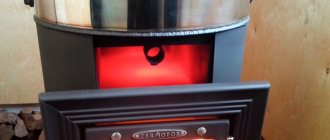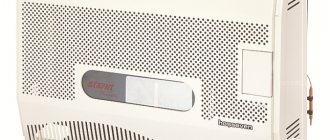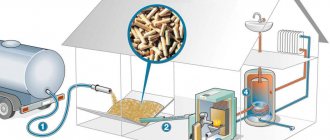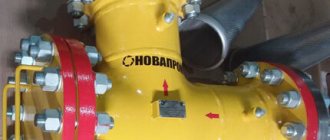The method of heating a summer house is one of the pressing problems that require a quick and economical solution. As a rule, there is no possibility of connecting to centralized heating networks. In addition, it is impractical to constantly heat (and pay for the process) the dacha, since people are there only periodically. Therefore, the best option is to have your own source of thermal energy.
This issue is solved in different ways, from the construction of stoves to the use of other effective devices. One of them is a gas ceramic heater, which has an optimal set of operating qualities and allows you to heat the room much faster than conventional devices.
Let's take a closer look at it.
What it is
This is a specialized device that provides a comfortable temperature in the room. It is highly efficient - the efficiency of infrared gas heaters reaches 80%.
Externally, IR gas ceramic devices look very respectable - they can be made in different configurations or sizes. The operating principle of heaters allows you to change the shape of the working element without loss of performance.
There are powerful models designed for heating large production areas. There are also compact household appliances designed for use at home. These types of devices are used to heat a dacha.
They are highly efficient and economical, allowing you to create a comfortable temperature in the room in the shortest time periods.
Principle of operation
Infrared heaters have a specific operating principle.
They radiate thermal energy into space, and all surfaces and objects in the radiation zone interact with this radiation. This means that it is not the air that is heated, as happens with convector-type devices, but the objects placed in the room.
A clear example of such an effect is the Sun - it heats the surface of the Earth, and the air is heated by it.
The device of a gas IR heater includes the following elements:
- mixing chamber where gas is combined with air;
- ceramic plates with holes through which the air-gas mixture passes. It burns and heats the plates to 800-900 °C;
- a reflector that reflects radiated heat waves in a certain direction.
Only the main structural components are listed. Many manufacturers are constantly developing and making their own amendments to the design, which makes the devices more efficient and economical.
Varieties
Ceramic gas heaters are available in different modifications, used in certain conditions.
The range of specialized stores includes:
outdoor heater
camp stove
converter
heat gun
fireplace
tiles, etc.
Only the most common design options are listed. It must be taken into account that all heaters are designed to implement the same basic tasks. Their names refer to configuration features rather than functional features.
Manufacturers are constantly developing new models and designs, expanding their range and producing devices with increased functionality.
For example, some models, in addition to heating rooms, can be used for cooking.
Advantages and disadvantages
The advantages of a gas infrared ceramic heater include:
- high heating efficiency, the ability to quickly increase the temperature in a cold room;
- the heating principle is not convection, which does not require waiting for the air temperature in the room to rise;
- efficiency - the efficiency of gas infrared heaters is about 80%;
- Most models operate autonomously - do not require connection to a power source;
- there is no need to connect to a centralized gas supply system - liquefied gas cylinders with a capacity of 5-50 liters are used;
- the devices are compact and mobile, they can be moved to other places without the need for permanent installation;
- most models are equipped with a piezo ignition system and fall protection - if this happens, the device automatically turns off the gas supply;
- long service life without loss of performance;
- environmental Safety;
- silent and unobtrusive operation of devices;
- heating can be carried out in a given area of the room without the need to waste energy on unused areas;
- affordable price - gas infrared ceramic heaters are cheaper than analogues of other designs.
Flaws:
- after shutdown, the room temperature drops quickly;
- heating is uneven, since the radiation has a directional effect;
- prolonged stay in the zone of active radiation can cause deterioration in health;
- devices may be dangerous for children or pets;
- operation of the devices is unsafe in terms of fire.
Expert opinion
Torsunov Pavel Maksimovich
The disadvantages of infrared gas ceramic heaters are common to all IR devices, therefore, they can be considered design features. At the same time, if you are aware of them and follow certain safety measures, undesirable consequences can be avoided.
Infrared film heaters
These micathermic panels are very easy to use. Thin graphite fibers are fixed onto one thermostatic film. This is a flexible device that can be attached anywhere - to the floor or ceiling, wall of any size.
Such devices are disguised as decorative rugs and operate silently and economically.
Source: mikrosovet.ru
You can buy gas infrared emitters (heaters, burners) for industrial ceilings with selection, calculation, design, installation, installation, commissioning and commissioning in the following cities of Russia: Moscow, St. Petersburg, Novosibirsk, Yekaterinburg, Nizhny Novgorod, Kazan, Chelyabinsk, Omsk, Samara, Rostov-on-Don, Ufa, Krasnoyarsk, Perm, Voronezh, Volgograd, Krasnodar, Saratov, Tyumen, Tolyatti, Izhevsk, Barnaul, Irkutsk, Ulyanovsk, Khabarovsk, Yaroslavl, Vladivostok, Makhachkala, Tomsk, Orenburg, Kemerovo, Novokuznetsk, Ryazan, Astrakhan, Naberezhnye Chelny, Penza, Lipetsk, Kirov, Tula, Cheboksary, Kaliningrad, Kursk, Ulan-Ude, Stavropol, Balashikha, Magnitogorsk, Tver, Sevastopol, Ivanovo, Bryansk, Sochi, Belgorod, Nizhny Tagil, Vladimir, Arkhangelsk, Surgut, Chita, Kaluga, Simferopol, Smolensk, Volzhsky, Kurgan, Orel, Cherepovets, Vologda, Saransk, Vladikavkaz, Vladikavkaz, Yakutsk, Murmansk, Podolsk, Tambov, Grozny, Sterlitamak, Petrozavodsk, Kostroma, Nizhnevartovsk, Novorossiysk, Yoshkar-Ola, Komsomolsk-on-Amur, Taganrog, Syktyvkar, Khimki, Nalchik, Shakhty, Nizhnekamsk, Bratsk, Dzerzhinsk, Orsk, Angarsk, Blagoveshchensk, Engels, Stary Oskol, Veliky Novgorod, Korolev, Pskov, Biysk, Mytishchi, Prokopyevsk, Yuzhno-Sakhalinsk, Balakovo, Rybinsk, Armavir, Lyubertsy, Severodvinsk, Petropavlovsk-Kamchatsky, Abakan, Norilsk, Syzran, Volgodonsk, Novocherkassk, Kamensk-Uralsky, Zlatoust, Ussuriysk, Elektrostal, Salavat, Nakhodka, Almetyevsk, Miass, Kerch, Berezniki, Rubtsovsk, Kopeisk, Pyatigorsk, Krasnogorsk, Maykop, Kolomna, Odintsovo, Kovrov, Khasavyurt, Kislovodsk, Serpukhov, Novomoskovsk, Neftekamsk, Novocheboksarsk, Nefteyugansk, Pervouralsk, Shchelkovo, Cherkessk, Derbent, Bataysk, Orekhovo-Zuevo, Nevinnomyssk, Domode dovo, Dimitrovgrad, Kyzyl, Oktyabrsky, Nazran, Kamyshin, Obninsk, Novy Urengoy, Kaspiysk, Murom, Ramenskoye, Novoshakhtinsk, Zhukovsky, Seversk, Pushkino, Noyabrsk, Evpatoria, Essentuki, Yelets, Achinsk, Artem, Sergiev Posad, Arzamas, Elista, Novokuibyshevsk, Berdsk, Noginsk, Dolgoprudny. Russia. Kazakhstan. Atyrau, Almaty, Astana, Shymkent, Karaganda, Aktyubinsk, Taraz, Pavlodar, Ust-Kamenogorsk, Semey, Uralsk, Kostanay, Kyzylorda, Petropavlovsk, Aktau, Temirtau, Turkestan, Kokshetau, Taldykorgan, Ekibastuz, Rudny, Zhanaozen, Zhezkazgan, Baikonur, Balkhash, Kaskelen, Satpayev, Kulsary, Ridder, Talgar, Stepnogorsk, Shchuchinsk, Kapchagai, Saran, Zharkent, Aksu, Arys, Saryagash, Shakhtinsk, Esik, Zyryanovsk, Ayaguz, Lisakovsk, Shu, Zhitikara, Aksai, Ingushetia
Source: airklima.ru
Popular makes and models
Gas ceramic infrared heaters are popular and in demand devices. They are in high demand, therefore, such devices are of significant commercial interest to manufacturers.
The production of such heaters is carried out by a large number of domestic and foreign companies, which have filled the market with high-quality and efficient devices.
The most popular among them are the following models:
Ballu BIGH-55
Products of Russian manufacturers. The heater is designed for use in industrial premises. With a power of 4.2 kW, it is capable of covering an area of 60 m2 with its radiation.
A special feature of the model is the ability to combine convective and infrared operating modes. The gas cylinder is located inside the case, and the front panel is equipped with perforations to allow hot air to escape. The power is adjusted in steps (3 positions), a thermocouple is used to control the presence of a flame. No connection to the power supply is required;
SPEC-GI-42V
The manufacturer of this heater is the Russian company SPEC, whose production facilities are located in China. With a power of 4.2 kW, the GI-42V heater is designed to operate in rooms measuring 40-80 m2.
Equipped with a protective function - tilting the body immediately stops the gas supply and extinguishes the flame. Features low gas consumption;
TIMBERK TGH 4200 SM1
The brainchild of Scandinavian engineers (the Swedish brand is owned by Arima Holding Corporation). The heater has a power of 1.4/2.3/4.2 kW (depending on the connected heating stage). Designed to heat 30-60 m2.
Equipped with a piezo ignition system, the equipment provides for the supply of liquefied gas (propane-butane G 30). Low fuel consumption (310 g/hour) - one cylinder is enough for continuous operation in maximum mode for 17 hours;
Siberian GII 3.65 kW
Products of the YuZA company. The form factor of the device is a stove. It can be directed to a specific area of the room, or used as a hot surface for culinary needs.
With high power, the device has a very small size (356 × 165 × 103 mm). This makes it convenient in the countryside, on a hike, fishing, etc.;
NeoClima UK-09
Products of a Russian brand with production facilities in China. Gas infrared heater with a power of 4.2 kW.
Designed for suspended or floor installation, intended for heating rooms up to 60 m2. Runs on liquefied gas (propane). There is a piezo ignition system and gas control;
Bartolini Pullover I Turbo Plus 4334
Universal heater made in Italy. The power of the device (in maximum mode) is 4.2 kW.
In addition to the gas ceramic element, the model is equipped with an electric 2-kilowatt heating element and a fan that ensure convection heat transfer. Capable of heating rooms up to 80 m2;
Hyundai H-HG2-23-UI685
Products from South Korean manufacturers. A tile with a power of 2.3 kW, capable of heating a small room (up to 18 m2). A universal type device that can not only heat rooms, but also be used as a camping hob. Gas consumption - 0.2 kg/hour;
Umnitsa GO-4kW-U
Compact and economical stove made in Russia. The power of the device is 4 kW, which allows heating up to 40 m2 (at maximum mode). The main fuel is liquefied gas, but it is possible to switch to natural gas (installation of a special nozzle is required).
The list below shows only the most popular heaters. There are a lot of manufacturers and models, therefore, listing them all is inappropriate.
Types of ceiling infrared heaters
Currently, there are three main directions in the production of this type of heating devices, and each of them has its own buyer. They are classified not so much according to the physical principles of operation, but rather according to their form, quantitative indicators and method of installation.
Gas heating appliances
As you might guess, they run on gas. Most often, a gas cylinder of various release forms is connected, but there are also models designed (or allowing) to connect main natural gas. The gas burning in the chamber heats the radiant panel, and it transfers the heat further.
Such devices have many advantages : they heat up very quickly, do not generate dust, and are great for outdoor use, but what would be an advantage for a cold workshop or a garage with a high ceiling will be a disadvantage for a room. These devices come in both short-wave (light) and long-wave (dark), but they all have high power, which can cause overheating and fire. Burning gas burns oxygen (1 cubic meter of methane requires 10 cubic meters of air for combustion), so the room where such heaters are located must be equipped with an exhaust hood.
Thanks to this combination of advantages and disadvantages, ceiling gas devices have found their buyer in production, but they are of little use for domestic use, except that at the dacha they can be hung in the yard. But among mobile models of such devices they have no competitors, and they are deservedly popular among tourists.
Among the ceiling models, it is worth noting such brands as Condor, Pacole, Roberts Gordon Blackheat, Norgaz, Ballu, and among Russian ones - Infra, SCHWANK.
If you purchased such a device for heating a workshop, workshop or other industrial premises, be sure to equip it with an exhaust hood and do not store explosives or flammable substances in it.
Electric heaters
This type of device is the most popular . Their merits cannot be ignored. First of all, this is:
- ease of installation;
- rapid heating of the room;
- absence of combustion products and oxygen burning;
- does not generate dust and does not emit odor.
All this is somewhat offset by the high price and the need to find the optimal location, because the irradiation angle is about 90 degrees. Low ceilings make the coverage of the room minimal, and the buyer is often faced with the choice of where to hang the emitter - above the bed or above the desk.
Before choosing a heater of this type, pay attention to the shape of the reflector and the lower front surface. If the first is semicircular and the second is flat, then the coverage angle will be no more than 90 degrees. To heat large rooms, opt for models with a semicircular front, or even better, with a tubular radiator. The latter have coverage exceeding 120 degrees.
Such devices are mounted on suspensions, but there are also models that can be mounted to the ceiling. They are equipped with good thermal insulation that prevents fire. You should take a closer look at the installation features in advance, since it is dangerous to build a device that is not intended for this purpose into the ceiling.
All ceiling heaters are equipped with a control unit, which is located on the wall. It is a box with a thermostat that allows you to regulate the temperature. The following brands of these products are available on the market: Almac, Ballu, Timberk, Peony, Resanta, NroClima, IkoLine, EcoLine, Bilux, Polaris.
Before buying such a device, evaluate the dimensions of the room where you will hang it. This is the area, ceiling height and the presence of various niches, if the room is not strictly rectangular. Also pay attention to the starting temperature and the one you want to achieve. This will determine the coverage and power with which you choose a product.
Warm ceilings
This is a built-in version of the heater, which is a carbon heater in a film, which is why they are sometimes called infrared films. The film is mounted on a layer of heat-insulating material, most often rolled, connected to a thermostat and covered with a false ceiling. Usually this is lining, plasterboard or suspended tiled ceilings.
This is a very economical and convenient heating method, and also safe: the film does not heat above 45 degrees. Disadvantages include:
- the need for correct placement of electrical appliances; there should be no film over them;
- in the event of a flood in the neighbors above, the system breaks down completely and cannot be repaired;
- not applicable for high ceilings, since the radiation power decreases with distance from the source.
Among the manufacturers it is worth noting the Korean Caleo, Heat, the Russian PSO-EVOLUTION (Zebra film) and NTK Innotech (Nirvana film), and the American Calorique.
Source: 220v.guru
Criterias of choice
The choice of a suitable heater is made based on the size and configuration of the premises. Each model has certain capabilities, the ability to heat a given area. At the same time, it is necessary to take into account the shape of the room - the device has a directional effect and cannot cover a room with a complex configuration.
You should not choose a heater “for growth”. It should be kept in mind that excess power will not be used for future use. It will heat the surfaces too much, which can cause damage to floor coverings or furniture. In addition, direct radiation directed at people or animals can cause deterioration in health.
Therefore, it is necessary to choose a device based on the area of the room. Manufacturers indicate how much area a particular device can cover. You can be guided by the ratio - 1 kW of power per 10 m2 of area. However, you can make a calculation taking into account the high efficiency of gas ceramic heaters and use a different formula - 1 kW per 15 m2.
Questions and answers
Let's look at the most common questions that inexperienced users have. The answers will provide significant time savings and eliminate the possibility of errors.
Is it possible to sleep with the heater on?
Manufacturers claim that the devices are completely safe and do not require constant attention. However, experienced users recommend turning off or at least setting the heating mode to minimum, as well as opening the windows or setting the shutters for micro-ventilation.
How long does it take from the moment the heating is turned on until the temperature rises?
As a rule, the effect of heaters begins to be felt from the very moment they are turned on. However, if the room is large, you will have to wait from a few minutes to half an hour.
Can I connect a regular propane tank to the heater?
This depends on the type of connector installed on the connecting hose. Different models may have their own design features, however, all the necessary adapters are commercially available.
If the room is large, is it possible to install two heaters?
There are no fundamental objections to the use of several devices in one room. You just need to take into account the specifics of the device’s operation and direct the heaters to different points. If they radiate to one point, there is a danger of overheating the floor covering or furniture. This can cause swelling and deterioration of finishes.
How dangerous are such heaters in terms of gas leakage?
Any gas equipment creates a certain danger and requires compliance with certain rules. Before starting use, you must carefully study the manufacturer's instructions and strictly follow its points. Then the danger from using the devices can be reduced to a minimum.
How to use an infrared heater correctly
Ceiling mount models do not require special care. They are simply sometimes cleaned of dust. Floor and wall options are also cleaned, like ceiling ones. They should not be covered with anything. The front part of the device should not be located near an electrical outlet or furniture.
Infrared rays are not harmful to the human body. If you stay under them for a long time, you can get heatstroke, just like being exposed to direct sunlight. For home use, it is better to choose low-power models, for example, 60-100 W per 1 square meter.
Experts recommend models with long rather than short radiation. The latter can be harmful to health. It is safer to have several small units with low wattage than a large infrared heater with high wattage.

